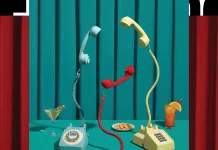If you have a home with a water heater, you know what a lifesaver they are. It’s true that many apartments don’t have adequate water heaters, and if you have to have a shower in the morning and your water heater breaks, it can ruin your day.
Few things are as frustrating and disruptive as a water heater issue. If you are experiencing an odd issue with your water heater, it’s important to know how to troubleshoot it. Water heaters often need to be fixed.
If you need advice on doing water heater repair in Denver, keep reading for our complete guide.
Replacing the Heating Elements
If your water heater isn’t heating properly, it’s likely that one of the elements is burned out and needs to be replaced.
To do this, you’ll need to shut off the power to your water heater, drain the tank, remove the access panel, and unscrew the elements but be careful when handling the elements, as they can be very hot.
Also, there are two heating elements in your water heater, one at the top and one at the bottom.
Only one element is operating at a time, and each element has its own thermostat.
The process of warming is initiated by turning on the top element first. The top element goes off when the water in the top half of the tank reaches the desired temperature, and the bottom element comes on to heat the remaining water.
Here are the pros and cons of having a dual-element water heater:
Pros
Dual-element water heaters are more energy-efficient than their single-element counterparts because they have two independent heating elements.
The environment will benefit and your monthly energy bills will go down if you use less electricity. Also, dual-element water heaters can quickly warm water.
Cons
Dual-element water heaters have some drawbacks to be aware of because no plumbing device is perfect. First off, maintaining single-element electric water heaters is simpler.
Dual-element water heaters have different replacement components for the top and bottom elements since their parts are not interchangeable.
Draining and Flushing the Tank
If the water heater is not draining properly, you may have a broken water heater and the tank may need to be flushed. This can be done by opening the drain valve at the bottom of the tank and letting the water run out until it is clear.
Here are specific steps on how to do it:
- Turn off the power
- Drain the tank
- Close the drain valve
- Fill the tank
- Turn on the power
- Let the tank heat up
- Flush the tank
- Allow the tank to refill
Following these steps will remove any sediment that has built up in the tank and improve the performance of your water heater.
Inspecting the Anode Rod
In order to keep your water heater in good shape, you should inspect the anode rod regularly.
The anode rod is responsible for protecting the tank from corrosion so if the anode rod is corroded, it will need to be replaced. You can inspect the anode rod by removing the access panel on the side of the water heater.
Checking the Gas Pressure
Before you can check the gas pressure on your water heater, you will need to find the location of the pressure regulator.
The pressure regulator is typically located near the gas control valve on the water heater so once you have located the pressure regulator, you will need to use a gas pressure gauge to check the gas pressure.
The gas pressure should be between 30 and 60 psi and if the gas pressure is outside of this range, you will need to adjust the gas pressure regulator.
If you have a gas water heater, it’s important to check the gas pressure to make sure it’s within the manufacturer’s specified range.
Too much or too little gas pressure can cause problems with the water heater. To check the gas pressure, use a manometer to measure the pressure at the gas input valve.
Adjusting the Temperature
If your water heater is costing you too much in energy bills, there are some simple things you can do to adjust the temperature and save money.
For an electric water heater:
- Check the circuit breaker
- Locate the thermostat
- Turn it to the desired setting
For a gas water heater:
- Find the dial
- Turn it to the “Pilot” position
- Use a match to light the pilot light
- Turn the dial to the “On” position
If the water heater is still not outputting hot water, check the gas supply or power source to make sure it is turned on.
If the water heater is still not functioning properly, you may need to call a professional for further assistance or for some additional water heater repair tips, view here for more.
Do Your Research
To fix your water heater, you’ll first need to do some research to determine what the problem is and what parts you’ll need.
Once you have a good understanding of the issue, you can then start to disassemble the water heater and make the necessary repairs.
Be sure to have plenty of patience and take your time so that you don’t break any of the parts and always remember that with some elbow grease, you should be able to get your water heater working like new again.
Learn More About Water Heater Repair in Denver Today
If your water heater is giving you trouble, don’t despair!
With a little effort, some basic tools, and tips on water heater repair in Denver, you can have it running like new again. Just follow the steps in this article and you’ll have hot water in no time.
Did you find this article helpful? Check out more of our blogs!










